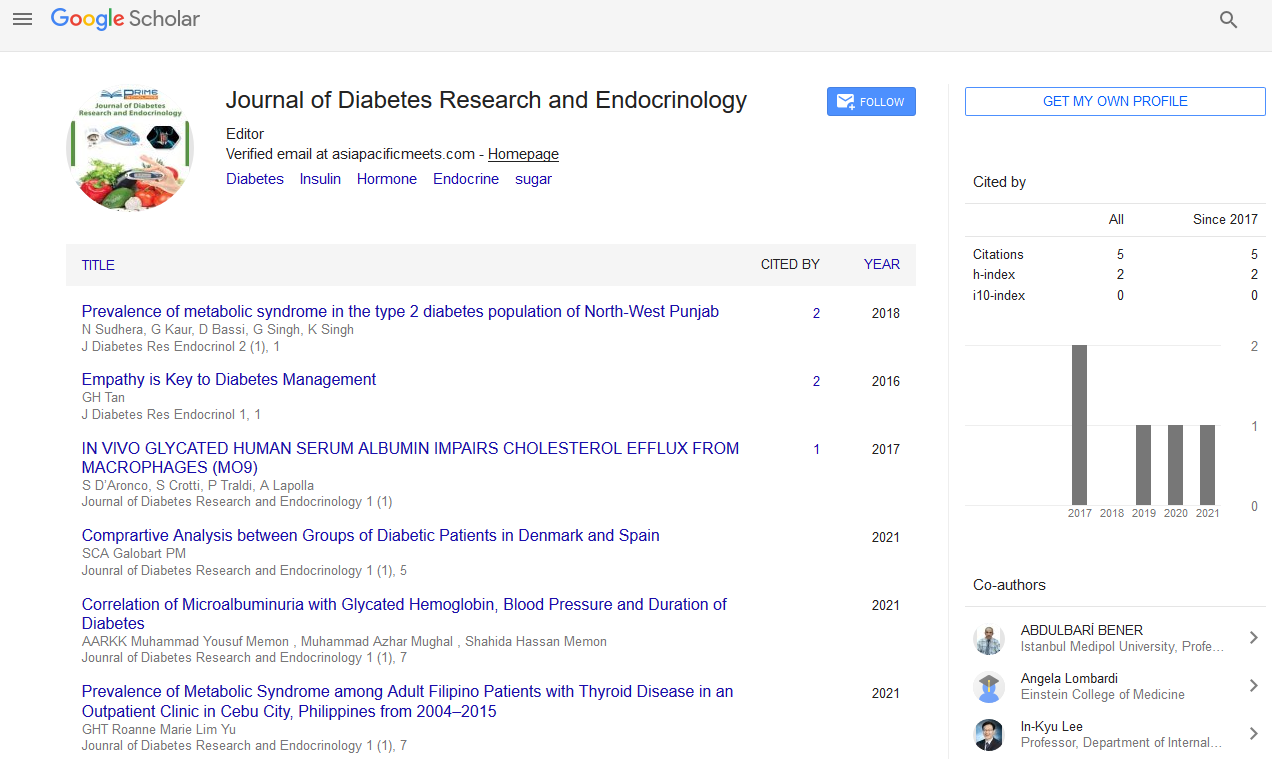Commentary Article - (2022) Volume 6, Issue 1
A Short Note on Diabetic Foot
1Department of Diabetology, Yale University, USA
*Correspondence:
Crystal M North, Department of Diabetology, Yale University,
USA,
Email:
Received: 03-Jan-2022, Manuscript No. IPJDRE-22-12591;
Editor assigned: 05-Jan-2022, Pre QC No. IPJDRE-22-12591(PQ);
Reviewed: 19-Jan-2022, QC No. IPJDRE-22-12591;
Revised: 24-Jan-2022, Manuscript No. IPJDRE-22-12591(R);
Published:
31-Jan-2022, DOI: 10.36648/09768610.6.1.8.
Description
The antimicrobial properties of Ag-based functionalized cowhides
by faltering strategies are shown in this work, which
details TiN-Ag antimicrobial coatings kept by d.c. magnetron
faltering on calfskin used for insoles in the footwear industry.
For the examples without silver, the X-beam diffraction (XRD)
results suggested the presence of a glasslike fcc-TiN stage, as
well as a fcc-Ag progressively work in the examples containing
silver. The coatings were homogeneous and scattered Ag
groups were recognised on the outer layer of tests with silver
substance over 8 at. percent, according to Scanning Electron
Microscopy (SEM) examination. The investigation using inductively
coupled plasma-optical outflow spectrometry (ICP-OES)
revealed that the morphology of the coatings affects the ionisation
of silver after a period of time.
The examples did not cause cytotoxicity, and only those that
were combined with silver caused antibacterial and antifungal
activity, demonstrating the TiN-Ag insole coatings’ ability to
treat illnesses such as diabetic foot.
Diabetes Mellitus (DM), regarded as a global plague, is a clinical
problem that affects a large proportion of the population of all
ages. Neurotic changes in the feet, which are the most common
reason for hospitalisation in the Western world, are one
of the most genuine complexities of the illness. Tissue disability
in the lower appendages exacerbated by injury, combined with
the diabetic patient’s vulnerability to diseases, results in a complex
clinical situation dubbed “Diabetic Foot.”
As a result, Diabetic Foot (DF) is the term used to describe the
various wounds that can occur on a diabetic’s foot. Skin sores
and deep planes appear as a result of this pathology, which
is linked to neuropathic, vascular, muscular, irresistible, and
practical changes. It is estimated that 19-34 percent of diabetic
patients are at risk of developing foot wounds, with ulceration
being an option for moderate fringe polyneuropathy, the most
common cause of these wounds.
In light of this, a number of European countries, as well as the
World Health Organization (WHO) and the International Diabetes
Foundation (IDF), have set a goal of halving the rate of
removal. According to international recommendations, DF can
be avoided by wearing appropriate footwear, taking precautionary
measures, and more.
Magnetron faltering effectively kept endless tin Ag dainty movies
on calfskin substrates without harming the substrate. All
examples have glasslike fcc-TiN stages, which are joined with
translucent fcc-Ag stages for silver tests. The coatings are homogeneous,
resulting in a TiN network Ag groups visible on a
superficial level for the silver-stored samples, as shown by the
results. Estimating contact points revealed the hydrophobic
idea of the film’s surface, with water contact points greater
than 90 and higher upsides of the dispersive part of the surface
energy compared to the polar part.
All examples stored with silver have been shown to have antibacterial
and antifungal properties. The morphology of the
coatings is thought to play a role in the ionisation of silver after
some time, based on the ICP-OES examination. As a result,
it’s reasonable to conclude that the Ag content alone does not
guarantee antibacterial and antifungal productivity, but that
the design, stage structure, and type of Ag isolation all play
a role. More research is needed to understand the impact of
silver, as well as silver particle discharge. This research looked
at the capabilities of TiN-Ag coatings, and it was an important
step toward determining the best framework for acting as an
antimicrobial covering on the insole surface with the ability to
reduce.
Acknowledgement
None.
Conflict of Interest
We have no conflict of interests to disclose and the manuscript
has been read and approved by all named authors.
Copyright: This is an open access article distributed under the terms of the Creative Commons Attribution License, which permits unrestricted use, distribution, and reproduction in any medium, provided the original work is properly cited.

